Report

India consumer report 2016 recap
• Only one in seven brands win, and they win because of penetration, not loyalty.
• Penetration is the only reliable cause of volume growth.
• But penetration is leaky, and constant re-recruitment is critical.
• To increase penetration, target a broad set of consumers, because:
◦ Consumers have repertoires and are not exclusive to your brands.
◦ Your brand’s heavy consumers are often heavy consumers of the competition.
◦ Low-frequency shoppers are important.
• Sustained brand growth requires multi-year investment in building three core brand assets, specifically, memorability, visibility and range.
What will it take to reignite FMCG growth in India?
For decades, the fast-moving consumer goods (FMCG) industry has been the bellwether of Indian corporations and the country’s economy. Not only has it successfully met every Indian’s daily needs, but it has also created aspirational brands, providing avenues for self-expression and emotional fulfilment. The industry has been at the forefront of innovation, providing world-class products at affordable prices and making them available in the remotest parts of the country.
Over the last three years, however, the industry has hit a slowdown. Its growth rate vs. the GDP has fallen to 0.8, from a historical ratio of 1.2. This slowdown is perplexing; it cannot be fully explained by external factors, such as changes in consumer spending power—which has only marginally decelerated in growth—or by any significant shifts to non-FMCG categories, including the rise of e-commerce. But as we look within the industry, during this period FMCG companies scaled back growth-oriented investments and shifted focus to sustaining profits—all at the cost of the top line.
Bain & Company partnered with Kantar Worldpanel to learn more about what’s contributing to overall FMCG growth, and to understand the success mantras of winning brands. We studied the shopping habits of nearly 81,000 Indian households, and looked at detailed records of 22 consumer goods categories and roughly 220 brands across food and beverages, home care and personal care. This is our second report on the Indian consumer and follows last year’s “Winning with India’s Shoppers.”
Data over the last two years shows that there have been some green shoots of growth. According to the moving annual total (MAT) for November 2015–October 2016, FMCG growth accelerated in 2016 vs. the prior two years. Our study showed that this was volume-led growth, propelled by overall growth in the rural market. Also, the growth was broad-based, with 18 out of 22 categories recording volume growth. Across these 22 categories, volume growth was driven by underlying penetration gains. Even highly penetrated categories, such as toothpaste and hair oil—both with penetration rates of 95% or higher—recorded material penetration gains.
Trends in any industry are an aggregate of how brands in each category perform. With this framing, we dug deeper and looked at performance brand by brand to identify winning brands. Our analysis showed that one in seven brands was a winner from 2014 to 2016. These winning brands exist in many categories—from fragmented to consolidated, local to foreign dominated and high to low growth. What unites them is their singular focus on increasing penetration—concentrating on this much more than on other metrics, such as purchase frequency or repurchase rate. In addition, some smaller brands are snapping at the heels of current leaders, aggressively growing volume through penetration gains.
Consistent with our 2015 study, the 2016 brand winners also experienced high consumer churn, but managed to win by constantly driving recruitment and gaining from other brands. This increase in penetration also spurs more frequent purchases, increasing the likelihood of a brand becoming part of a consumer’s repertoire (consumer repertoire refers to the set of brands purchased by a shopper within a given category). These findings are in line with similar studies that we have undertaken across the globe in both developing markets, such as China and Indonesia, and developed markets, such as the US and the UK.
This report also underscores the research of the Ehrenberg-Bass Institute for Marketing Science, summarised by Professor Byron Sharp, director of the Institute, in his book How Brands Grow, based on decades of observations of buying behaviour. And our work with clients on growth strategies has shown that the best companies increase penetration and outperform their competitors by thoughtfully investing in both the quantity and quality of three key areas:
Brand memorability. “It’s not about what they think of you; it’s about making them think about you in the first place.” Rather than relying on constantly switching messaging and running campaigns in waves to grab attention, winners build brand memorability by targeting broadly, always being on air, and using consistent messaging that focuses on memory structures and distinctive assets.
Shopper visibility. “It’s much easier to sell more of what people really want vs. selling things they are not waiting for.” Hero SKUs are the proven products for any particular brand. They contribute to the bulk of sales and profits because they are what every shopper will know and look for. Our research showed that penetration gains of brand winners were directly linked to the performance of the hero SKU. Brands that ensure that these hero SKUs are readily available in as many stores as possible increase their chances of landing in consumers’ baskets.
Range productivity. “Surprisingly few innovations lead to real, profitable growth, while there is always more to be done on the ‘core’ products.” Brand winners launch fewer, more successful new products. Instead, brand winners create heroes and compel them to grow, thereby simplifying the rest of the product portfolio while still holding shelf share. They rely on deep insights about consumer repertoires to guide innovations, launching products that reach a larger number of shoppers rather than break penetration barriers.
Building these assets is not a one-time activity. It requires continuous investment, especially as the industry becomes more competitive. While market leaders in 19 out of 22 categories maintained their leadership positions from 2014 to 2016, about 50% lost share. Further, only one in seven brands were winners in 2016, down from one in five in 2015, signifying increased competitive intensity.
India is at the cusp of the FMCG S-curve, and there is significant room to grow over the next 5 to 10 years. A nominal GDP growth rate of roughly 12% over the next three years could signal an FMCG growth rate ranging from a low of 9% to a high of 17%, depending on player action. As the Indian FMCG industry looks to reignite growth—and brands strive to outperform competition—it will be imperative to have a well-thought-out plan that captures consistently improving brand penetration over the long term.
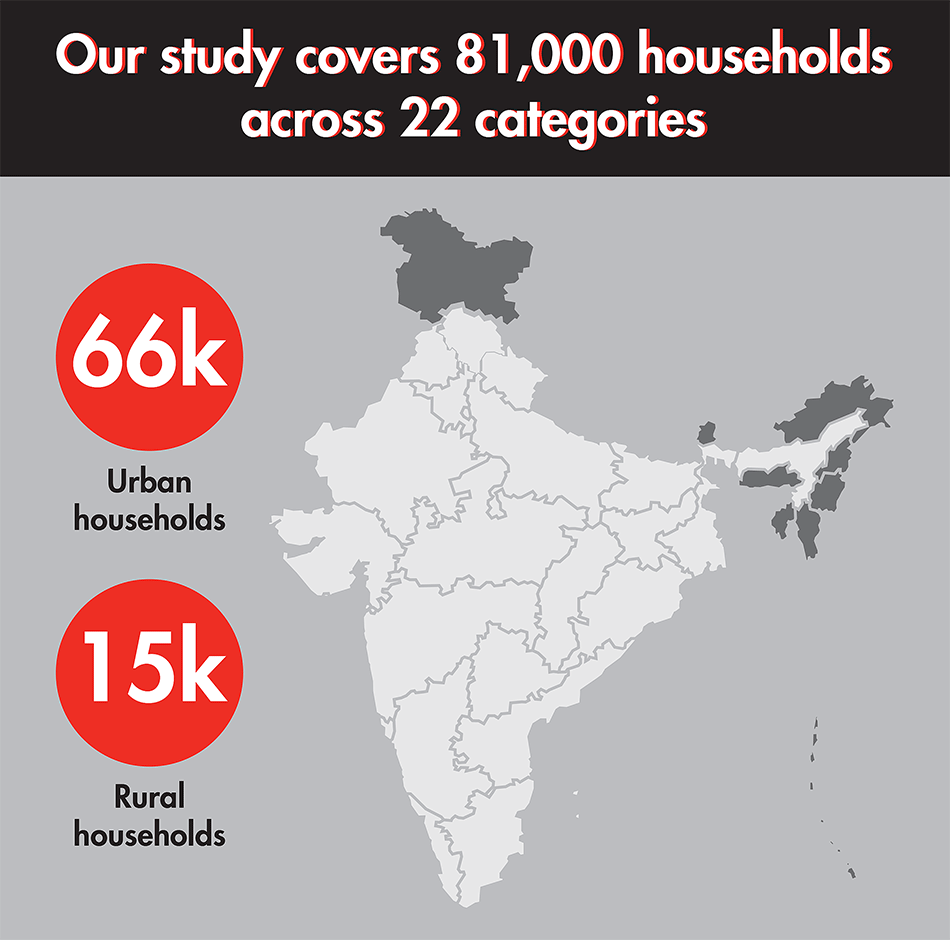
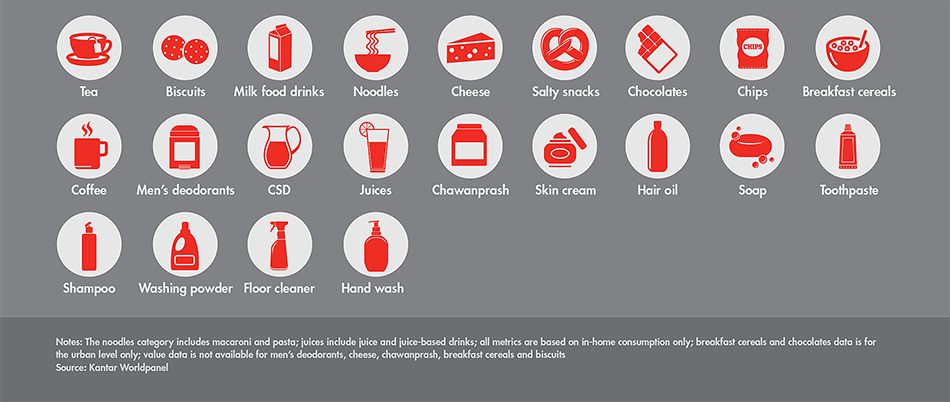
1. The long arc of FMCG in India
- Historically, the Indian FMCG market has grown at about 1.2x the nominal GDP.
- A few aberrations have occurred, largely explained by the monsoons.
- However, since FY13 this rate has come down to 0.8x.
- The FMCG slowdown is not fully explained by:
- Consumer spending power—there has been a marginal deceleration in income growth.
- The rise of e-tailing—there is no evidence for spending shifting away from FMCGs.
- FMCG companies seem to have created a self-fulfilling prophecy of low growth.
- A few quarters of low growth prompted the scaling back of investments.
- The focus has been on sustaining profit growth, at the cost of the top line.
- India is at the cusp of the FMCG S-curve, and the growth potential is huge.
- Opportunity to reignite growth: 1.2x to 1.4x the nominal GDP (next three to five years).
- FMCG and other consumer brand winners offer valuable lessons.
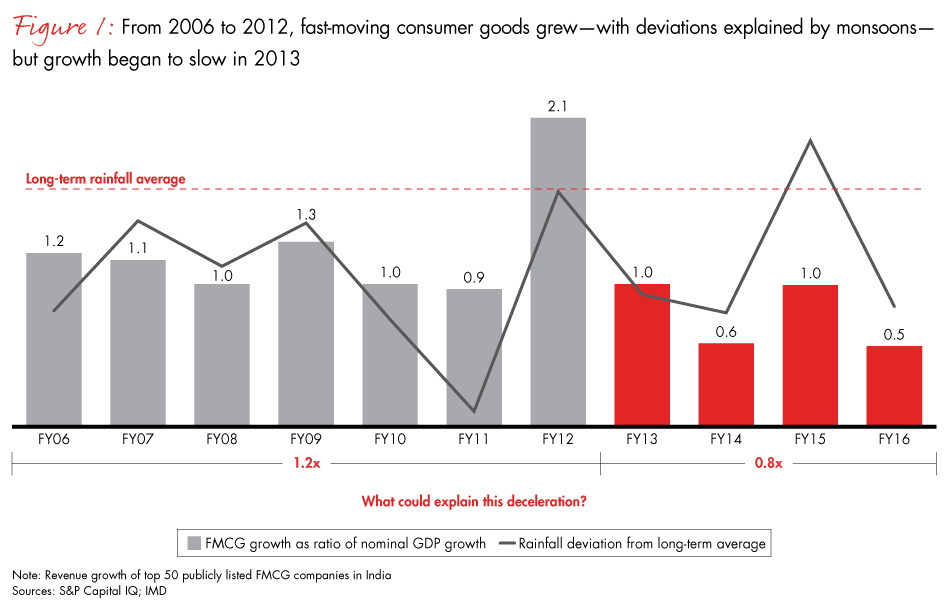
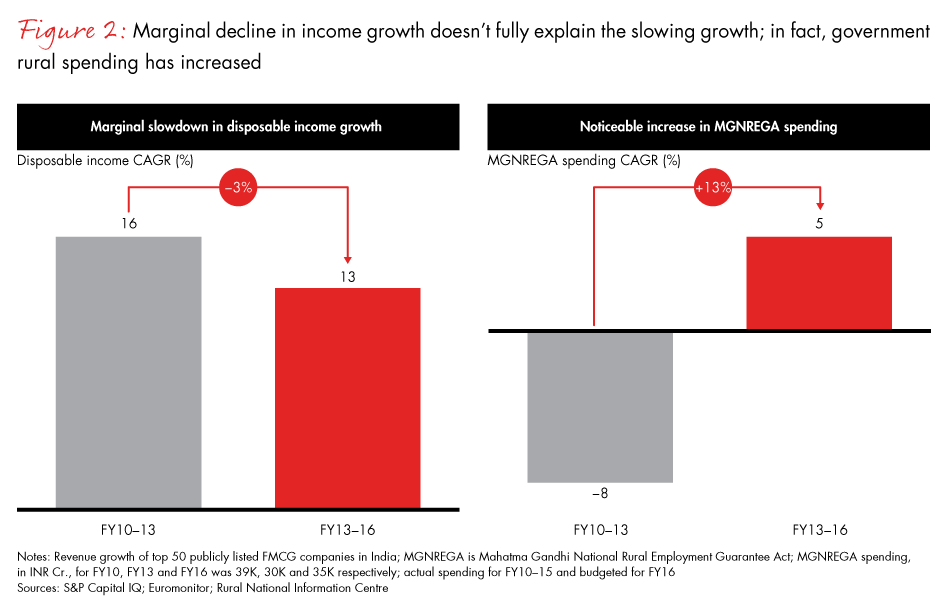
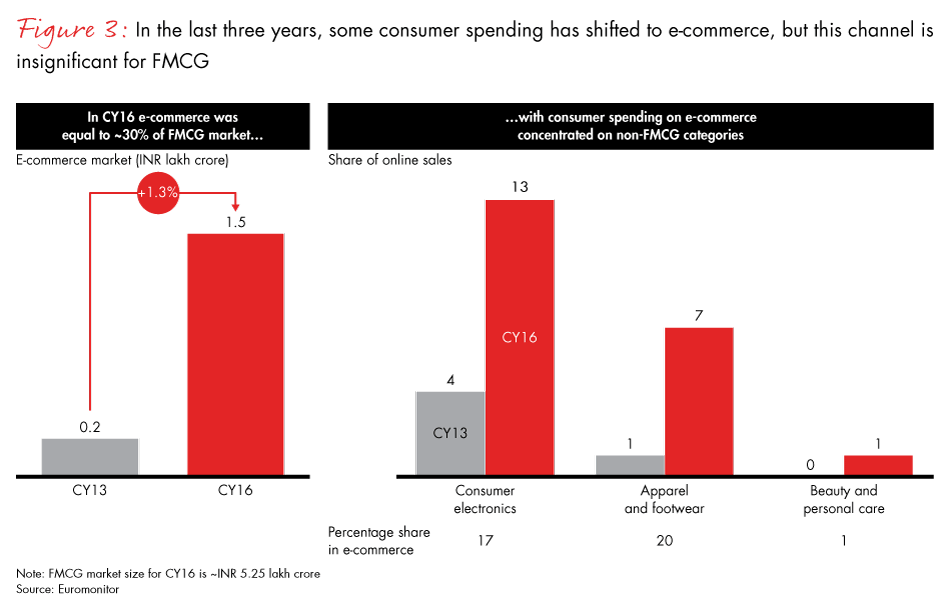
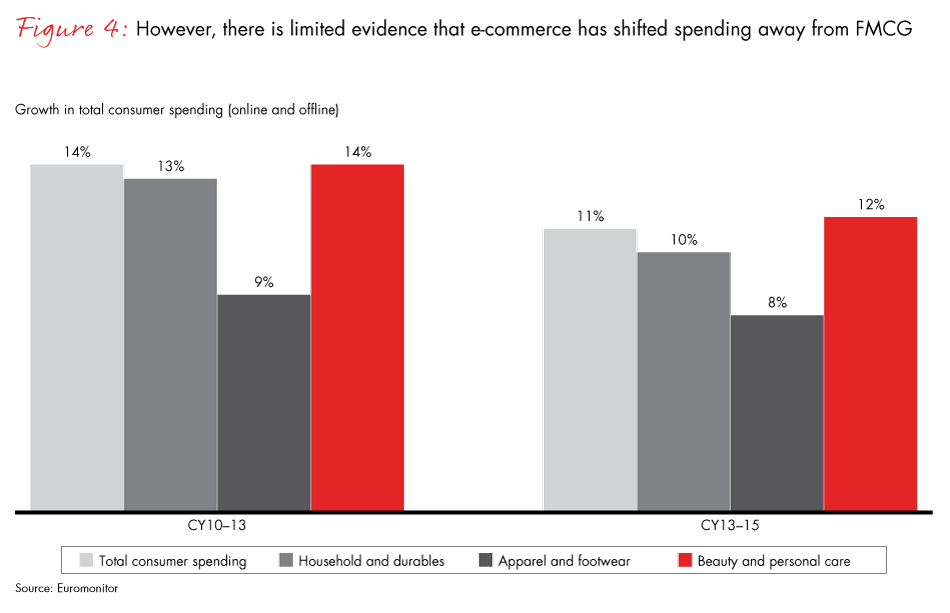
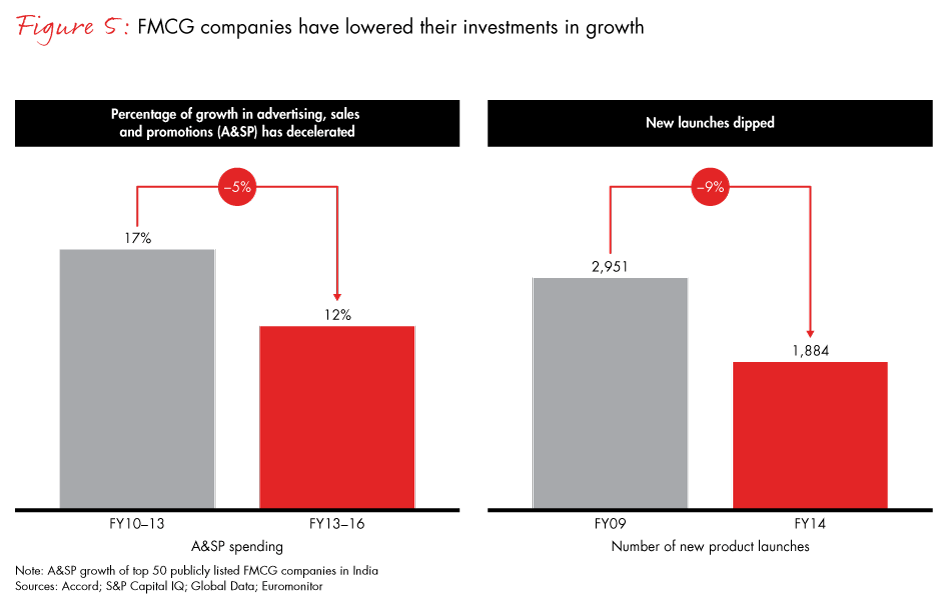
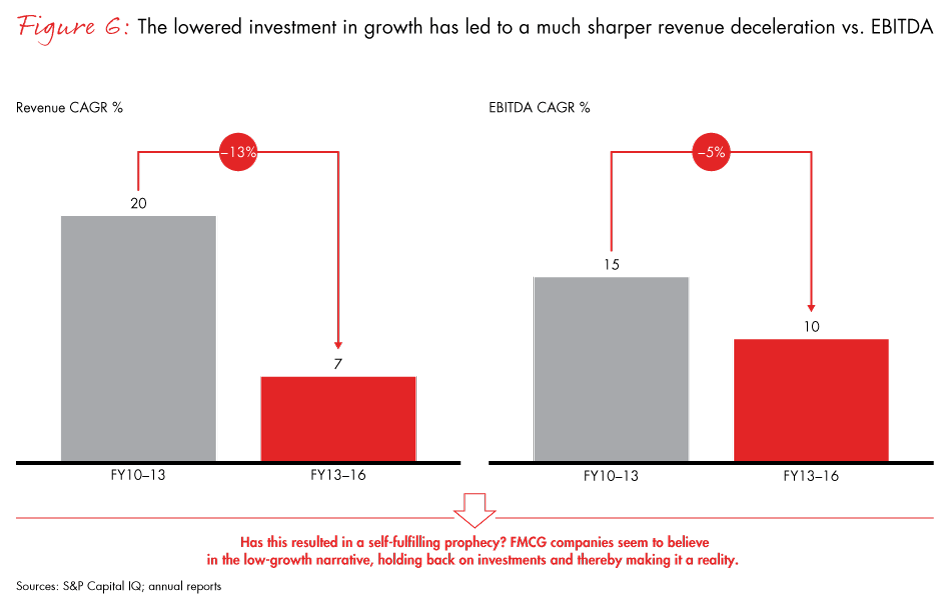
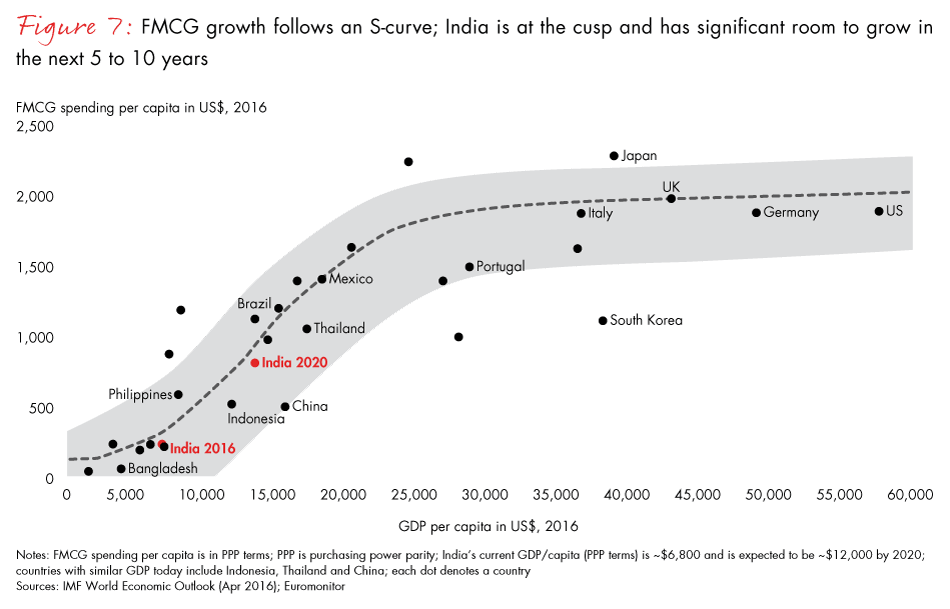
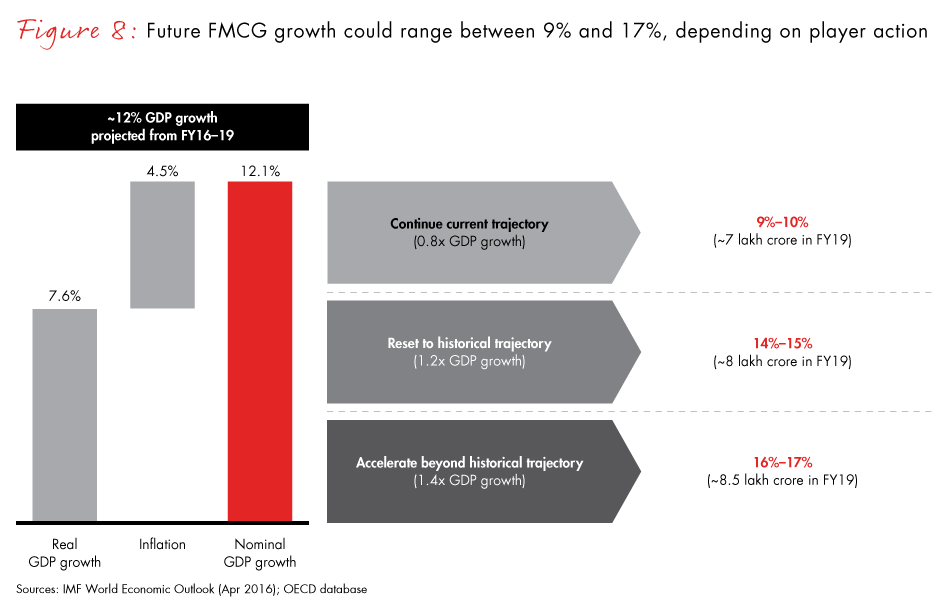
2. Green shoots of growth
- FMCG growth accelerated in 2016—it was broad based, driven by rural and volume growth.
- Overall FMCG growth: 9.3% (MAT 15/16); food led growth at about 10% followed by home care at 9%.
- Growth was broad based with 18 of the 22 analysed categories experiencing volume growth.
- Penetration continues to be king—the key to volume growth across categories and brands.
- Of the 18 categories that grew volume, 17 witnessed an increase in penetration.
- Even highly penetrated categories such as toothpaste, hair oil, salty snacks, shampoos and biscuits increased penetration.
- There is a material opportunity to move towards more expensive premium brands—share of premium brands is low but increasing.
- Share of premium brands for 75% of categories is low (less than 20%); however, around 60% of categories increased their premium brand share.
- Leaders are holding the fort but face increasing competition from established and new competitors.
- Leaders in 19 out of 22 categories maintained leadership, although 50% lost volume share.
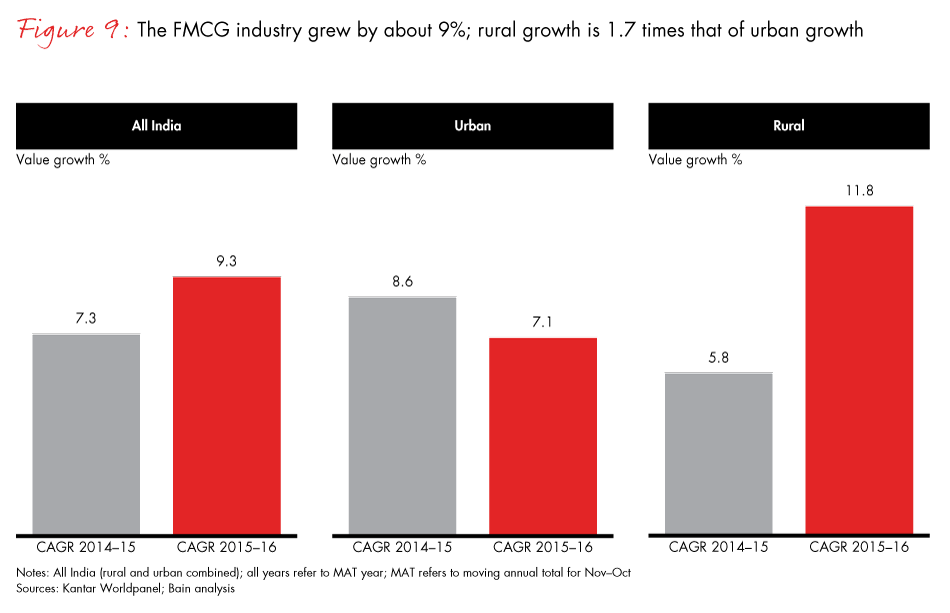
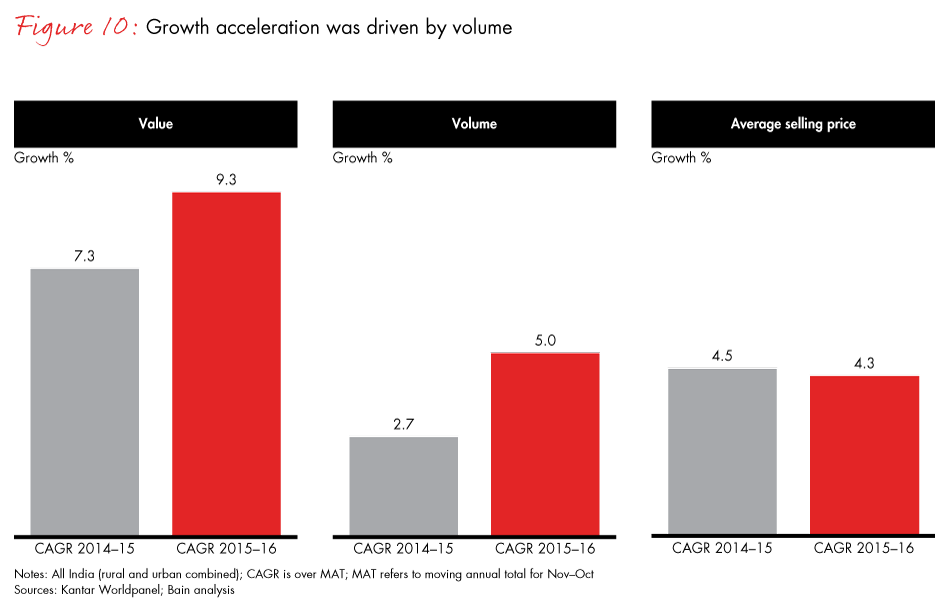
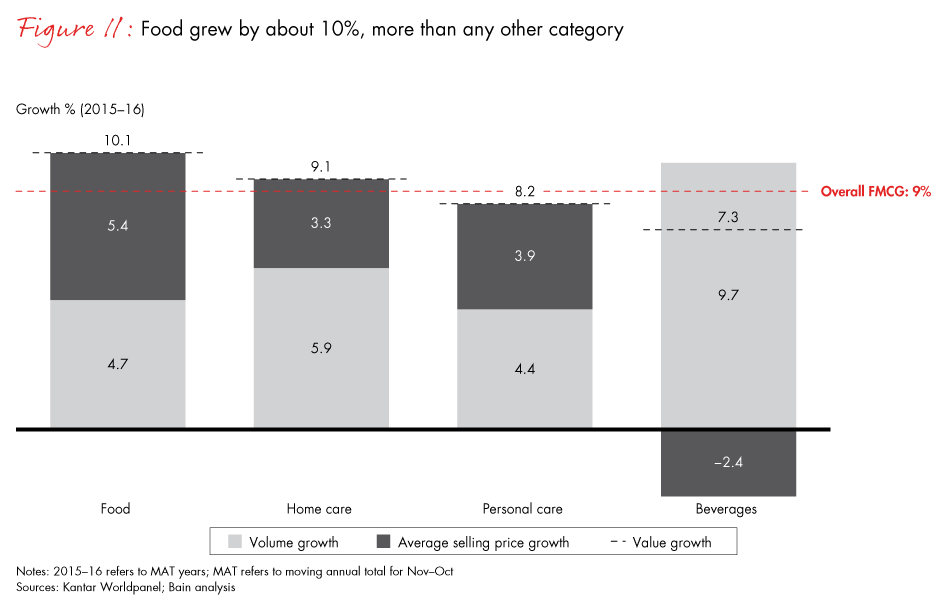

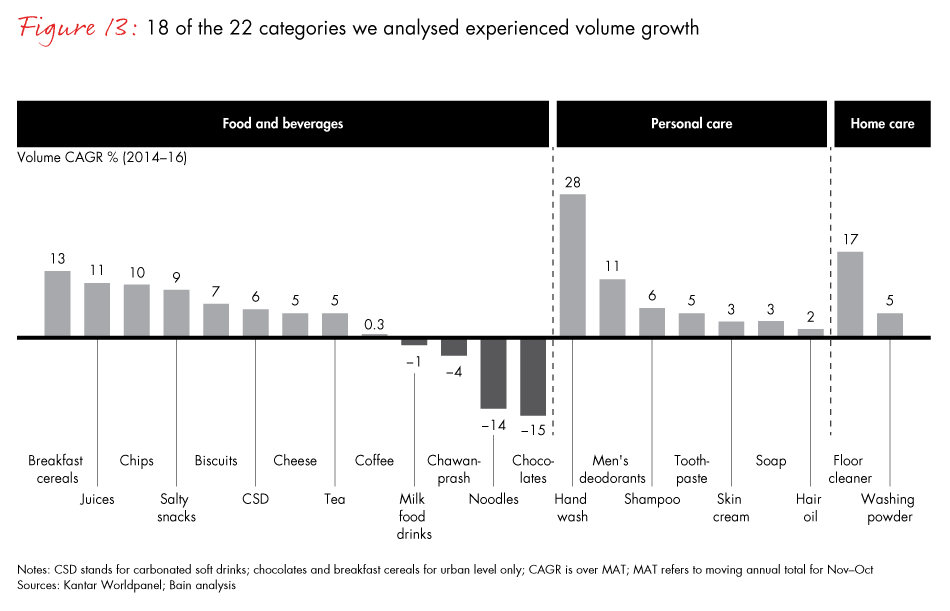
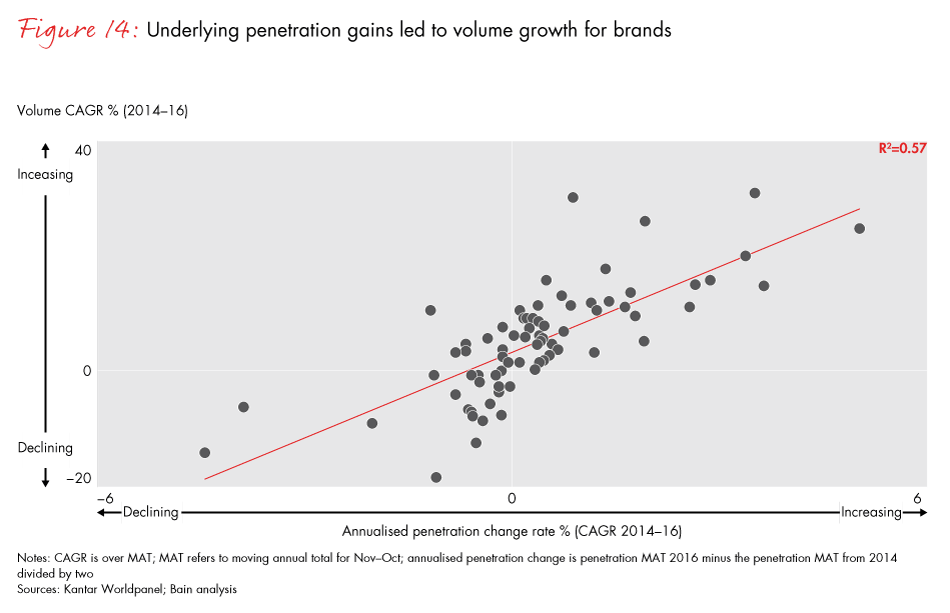
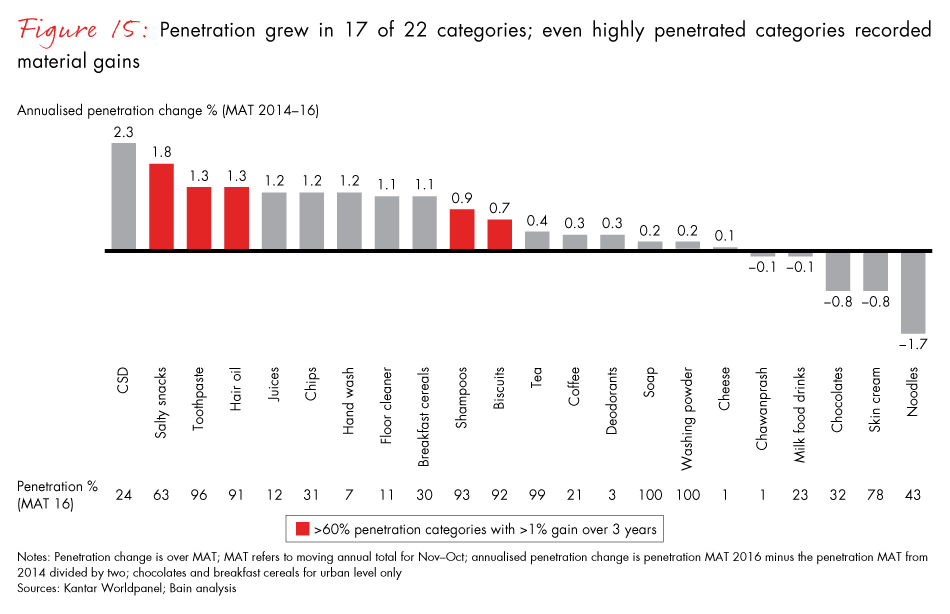
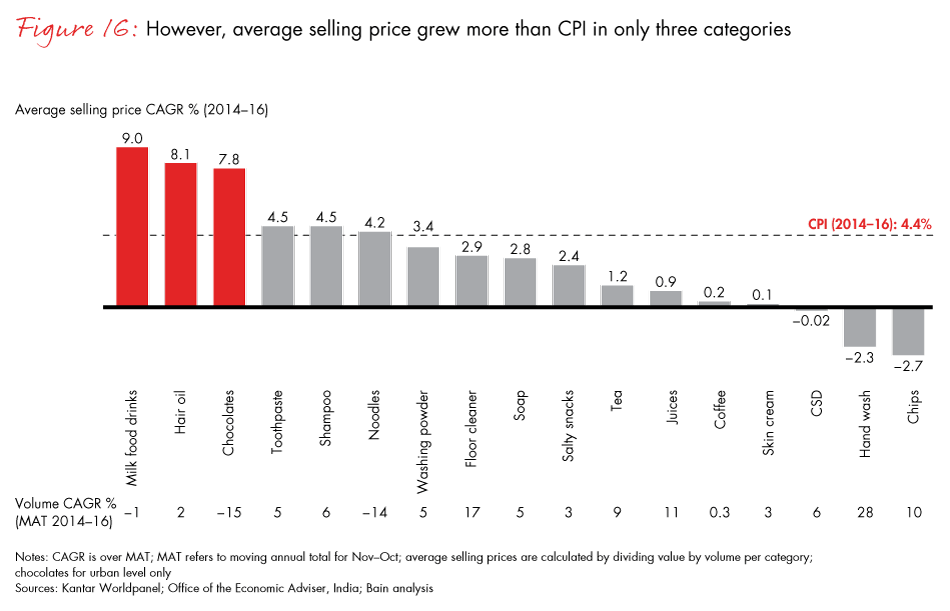
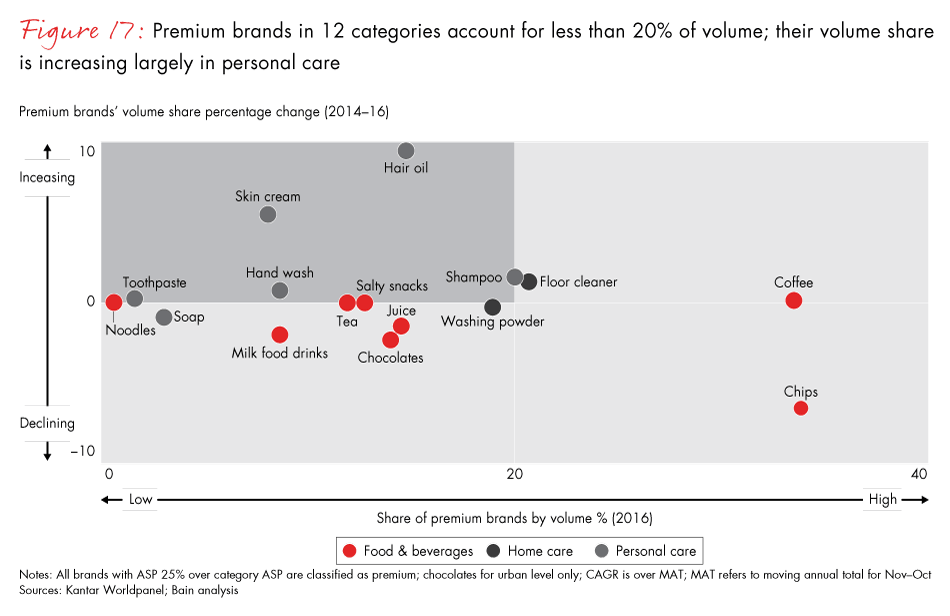
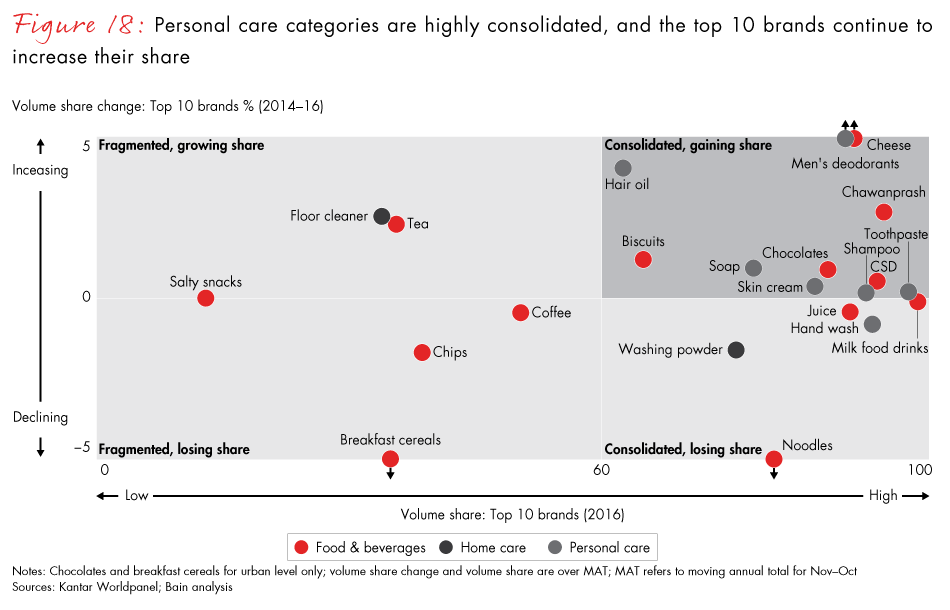
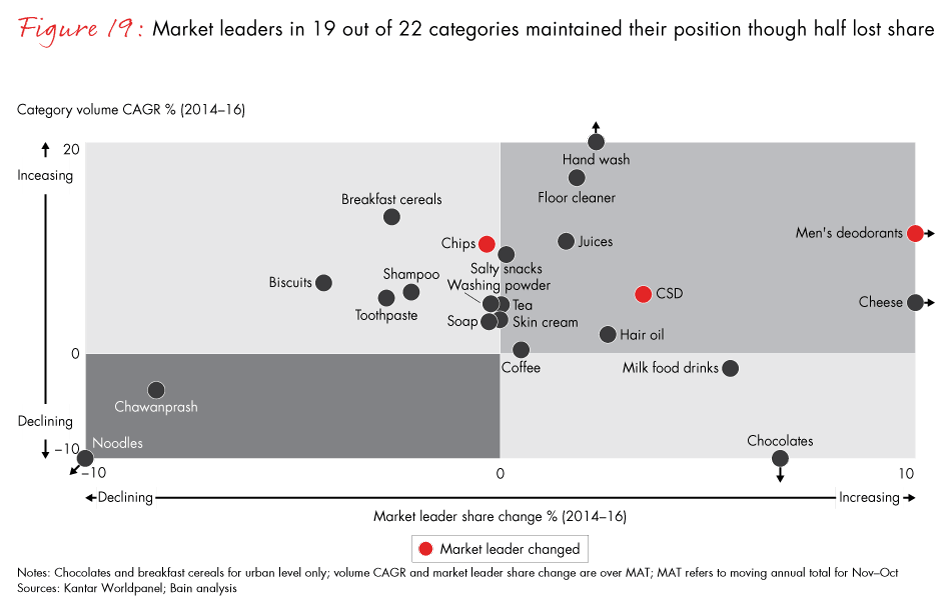
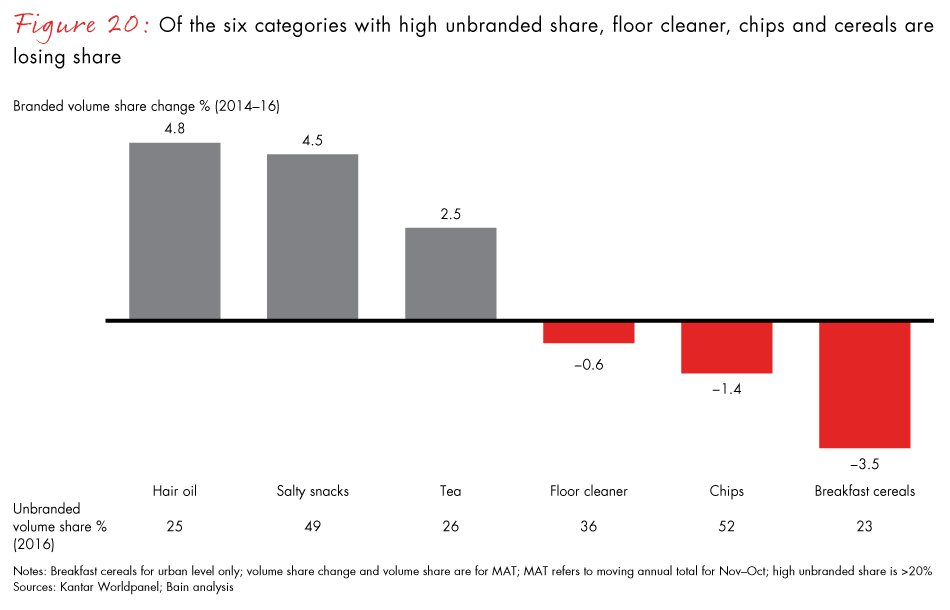
3. The winning success mantras
- Only one in seven brands are winning, down from one in five in 2015—it’s increasingly difficult to gain share.
- In 2016, we identified 35 brand winners; 19 of these were also winners last year, but 16 brands were new entrants.
- Additionally, there are seven smaller brand “rising stars” that could potentially challenge the leaders.
- Winners succeed by outperforming competition in increasing penetration. They do so by:
- Constantly driving re-recruitment and gaining from other brands.
- Focusing on hero SKUs.
- Bain & Company’s work, globally and in India, shows that winners:
- Obsess over what consumers actually do, not say.
- Use these insights to increase consideration and penetration.
- They do so by harnessing three brand assets—memorability, visibility and range.
- To increase sustainable growth, FMCG companies must incorporate these winning mantras into their growth model.
- The Bain Brand Accelerator® can help make optimal investment and execution choices across the three brand assets.
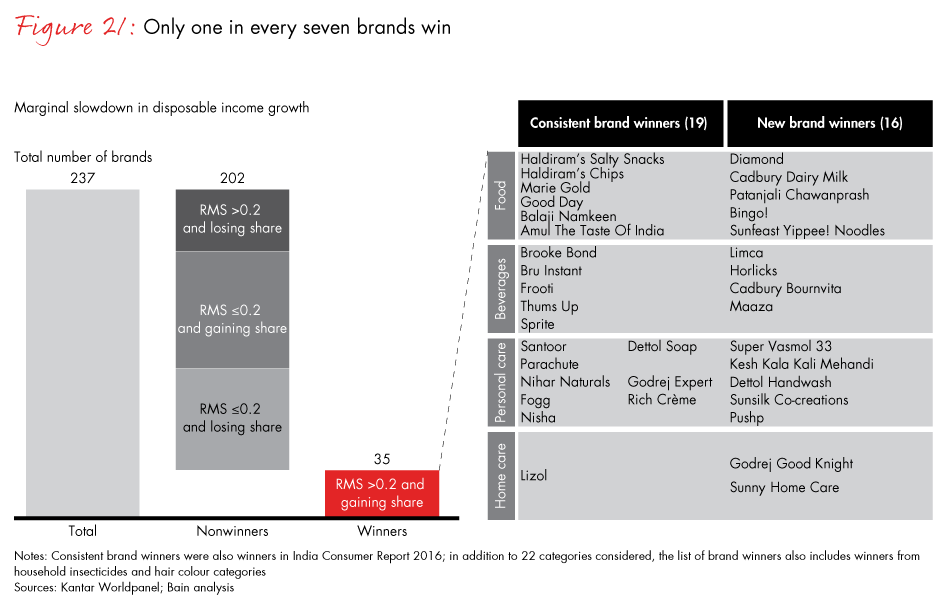
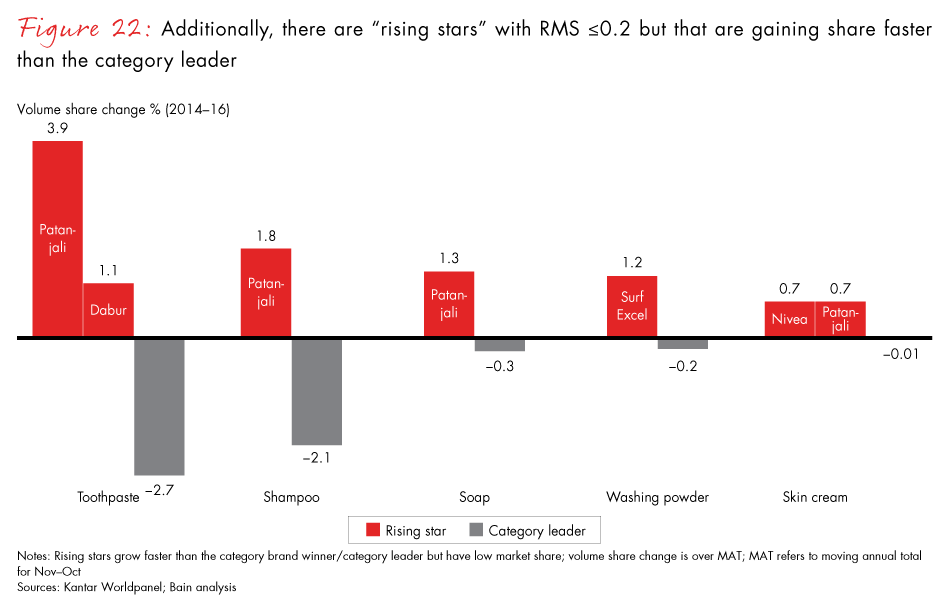
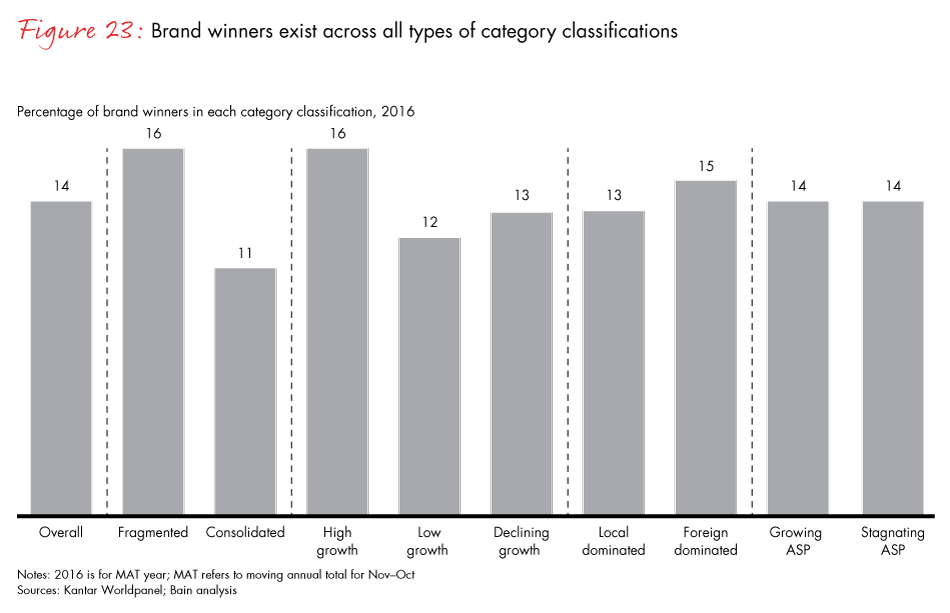
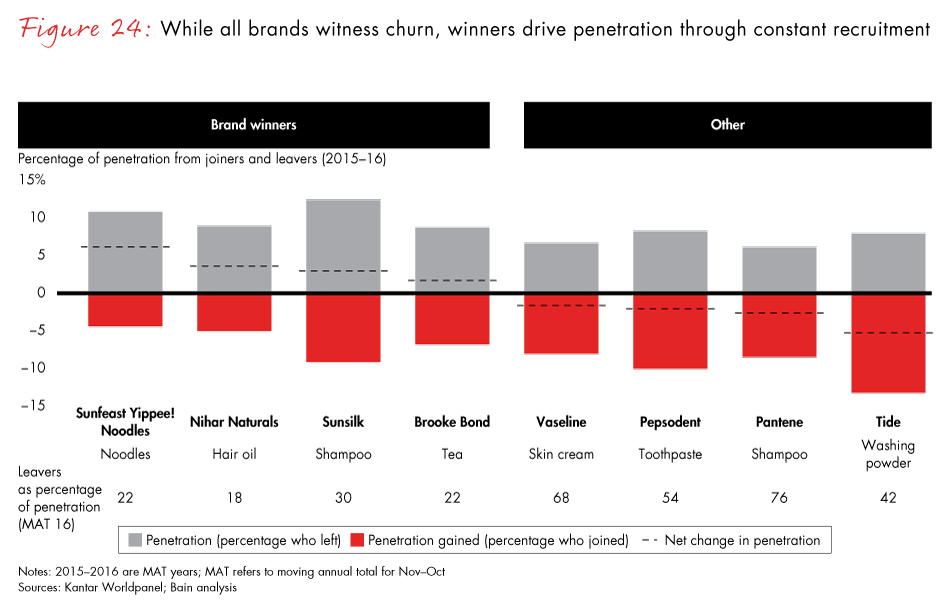
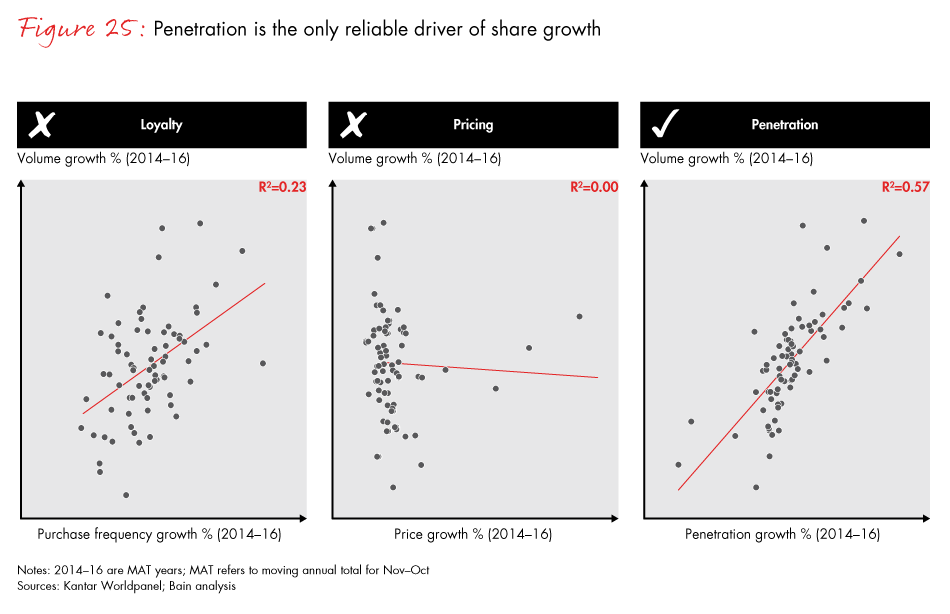
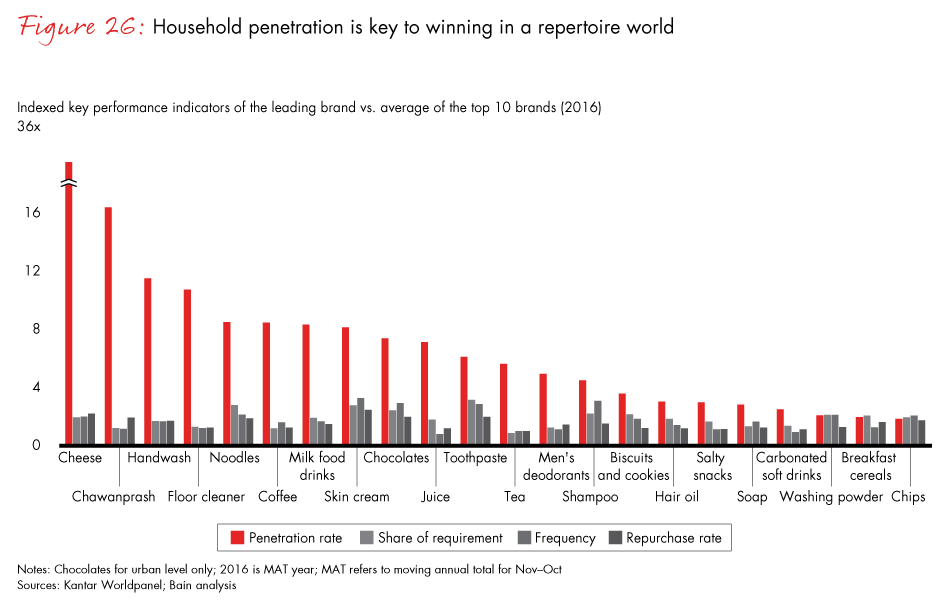
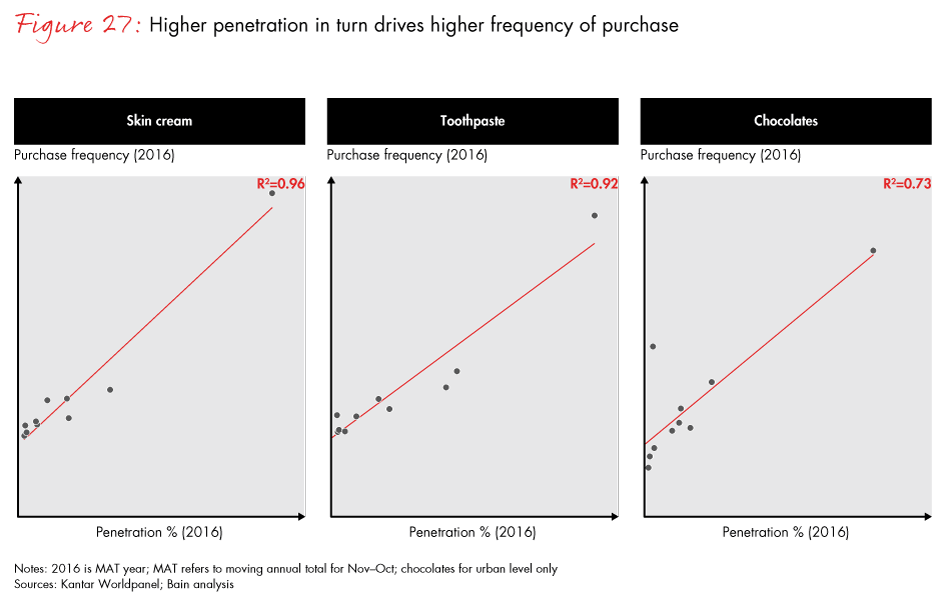

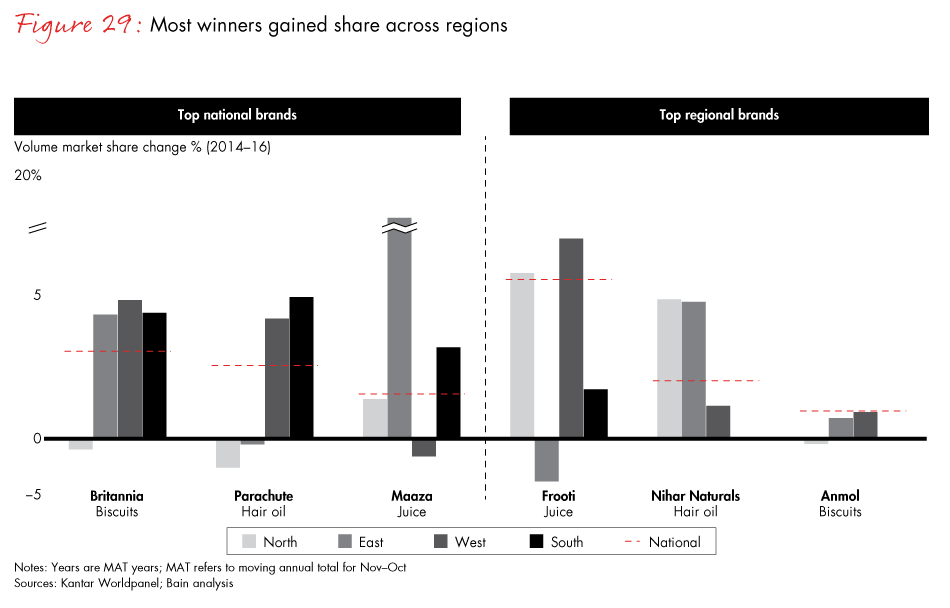
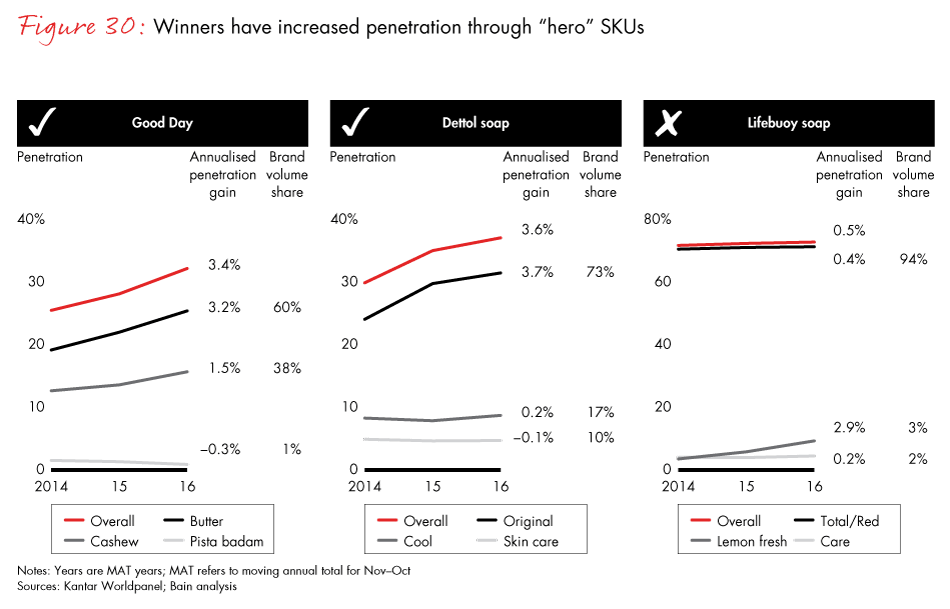
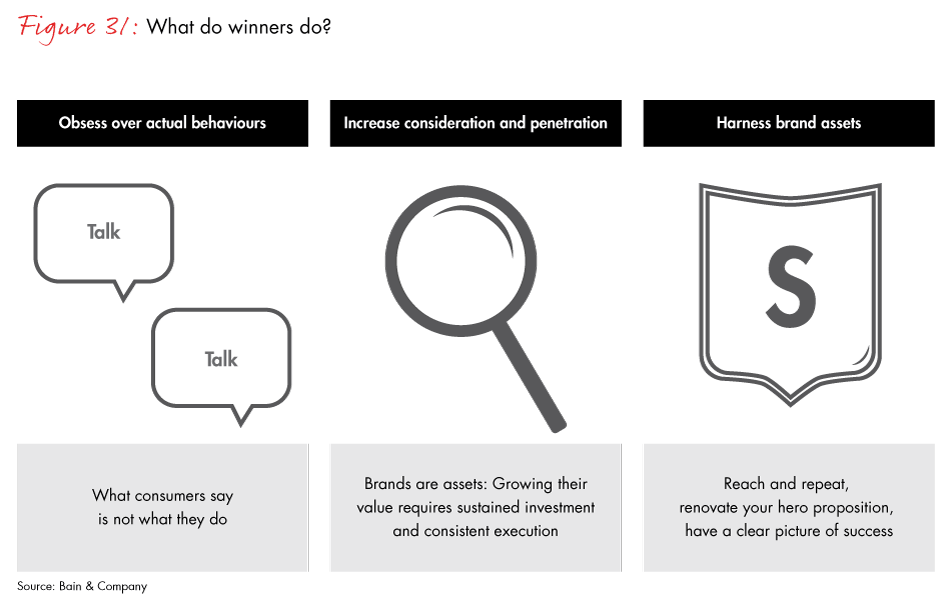
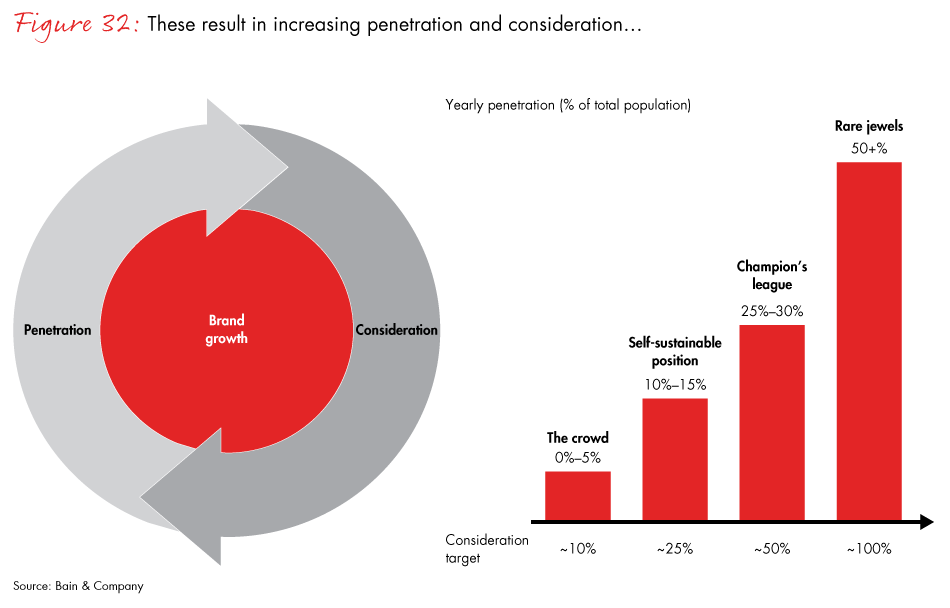
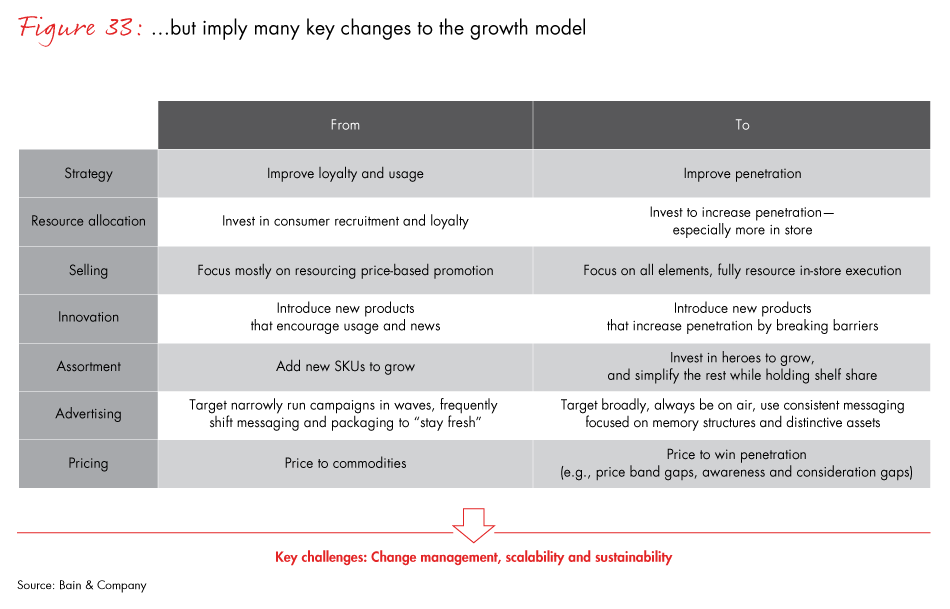
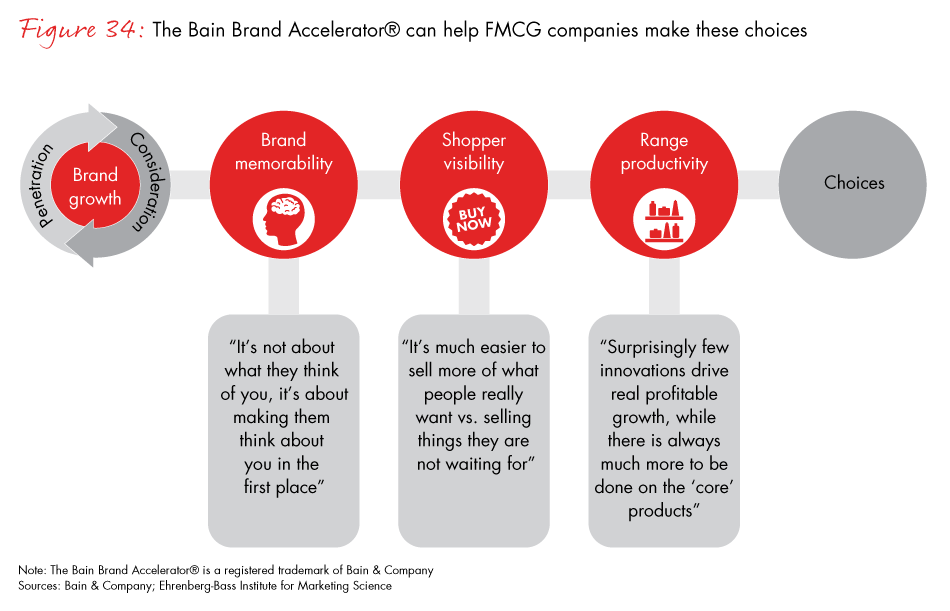
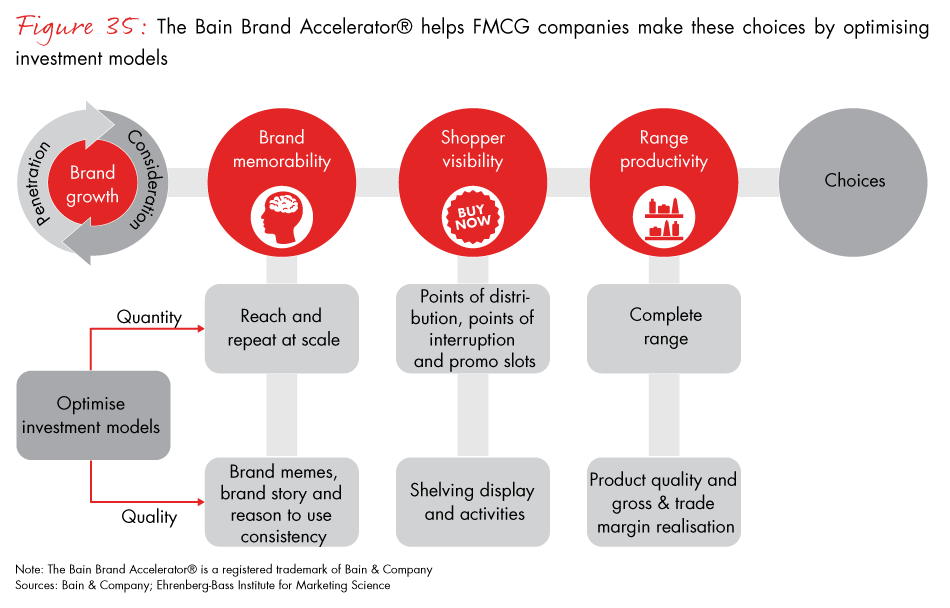
4. Key takeaways
- Industry growth accelerated in 2016—it was broad-based, led by rural and volume growth.
- Penetration continues to be king—the key to volume growth across categories and brands.
- There is a material opportunity to move towards more expensive premium brands—share of premium brands is low but increasing.
- Category leaders are holding the fort but face increasing competition.
- One in seven brands are winning, down from one in five in 2015—as it becomes increasingly difficult to gain share.
- Winners have outperformed competition by constantly driving re-recruitment.
Nikhil Prasad Ojha is a Bain & Company partner based in Mumbai, and he leads the firm’s Strategy practice in India. Mahima Chugh is a principal based in New Delhi and Chicago, and Sachin Khandelwal is a principal based in Mumbai. They are all members of Bain & Company’s Consumer Products practice.
Acknowledgements
This report is a joint effort between Bain & Company and Kantar Worldpanel with support from the Confederation of Indian Industry (CII). The authors extend gratitude to all who contributed to this report; in particular, K. Ramakrishnan, General Manager and Country Head at Kantar Worldpanel, and Vinay Khamkar, Group Business Director of FMCG Research at Kantar Worldpanel.
We would like to thank Bharat Puri (Chairman, CII National Committee on FMCG, 2016–2017, and Managing Director, Pidilite Industries) and Vivek Gambhir (Co-Chairman, CII National Committee on FMCG, 2016–2017, and Managing Director, Godrej Consumer Products) for their support and guidance while developing this report.
We would also like to thank Ira Kaur, Anjali Chandra and Shaily Saluja of Bain for their assistance in creating this report.
The Bain Brand Accelerator® is a registered trademark of Bain & Company, Inc.
Note on the report
The information in our report supports the insight that—across categories and countries—increasing penetration is the primary way to build big brands. This is a key insight from the research of the Ehrenberg-Bass Institute for Marketing Science.
This information is based in part on data reported by Kantar Worldpanel through its Indian household panel. The information contains estimates derived from approximately 81,000 households and is subject to general errors and statistical assumptions associated with market research.




































